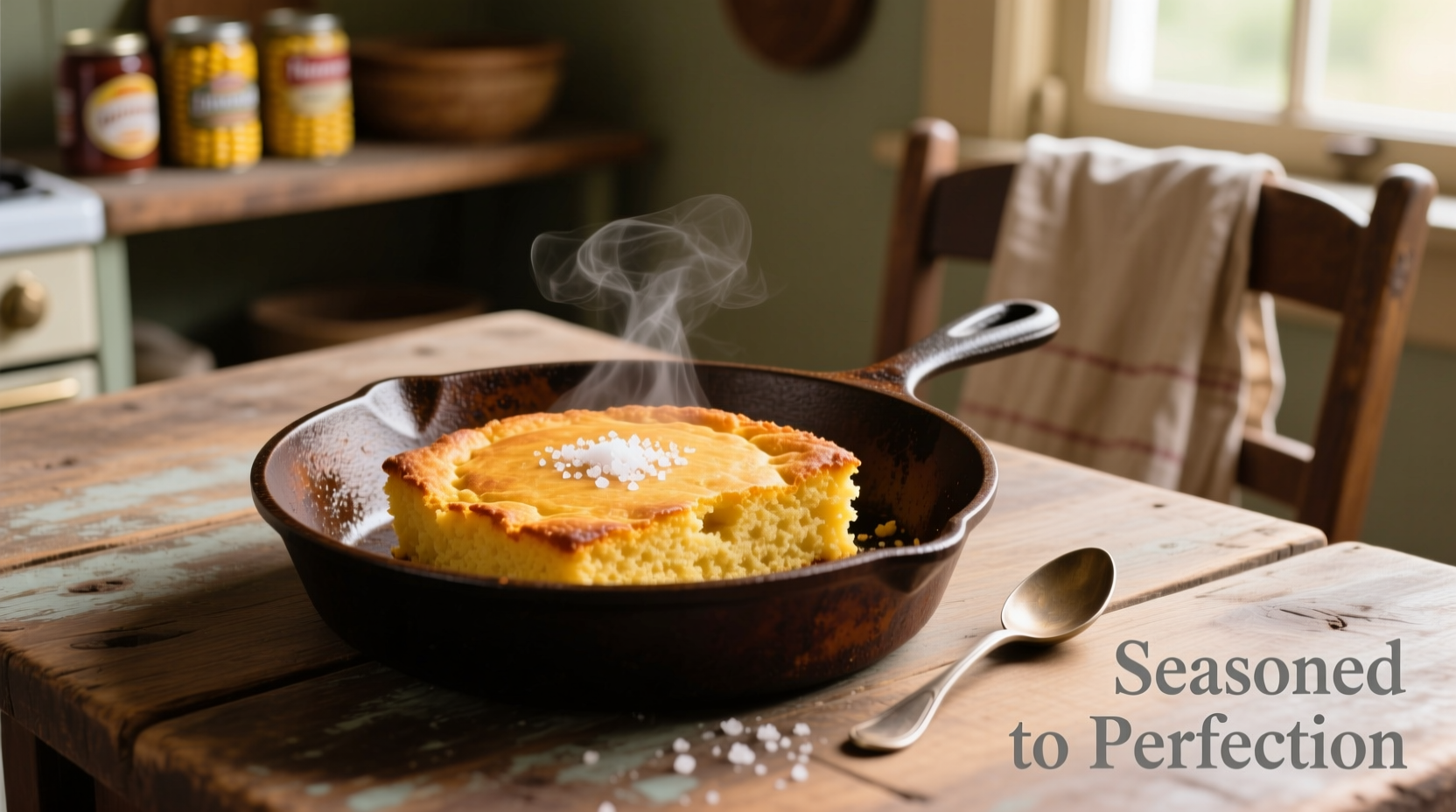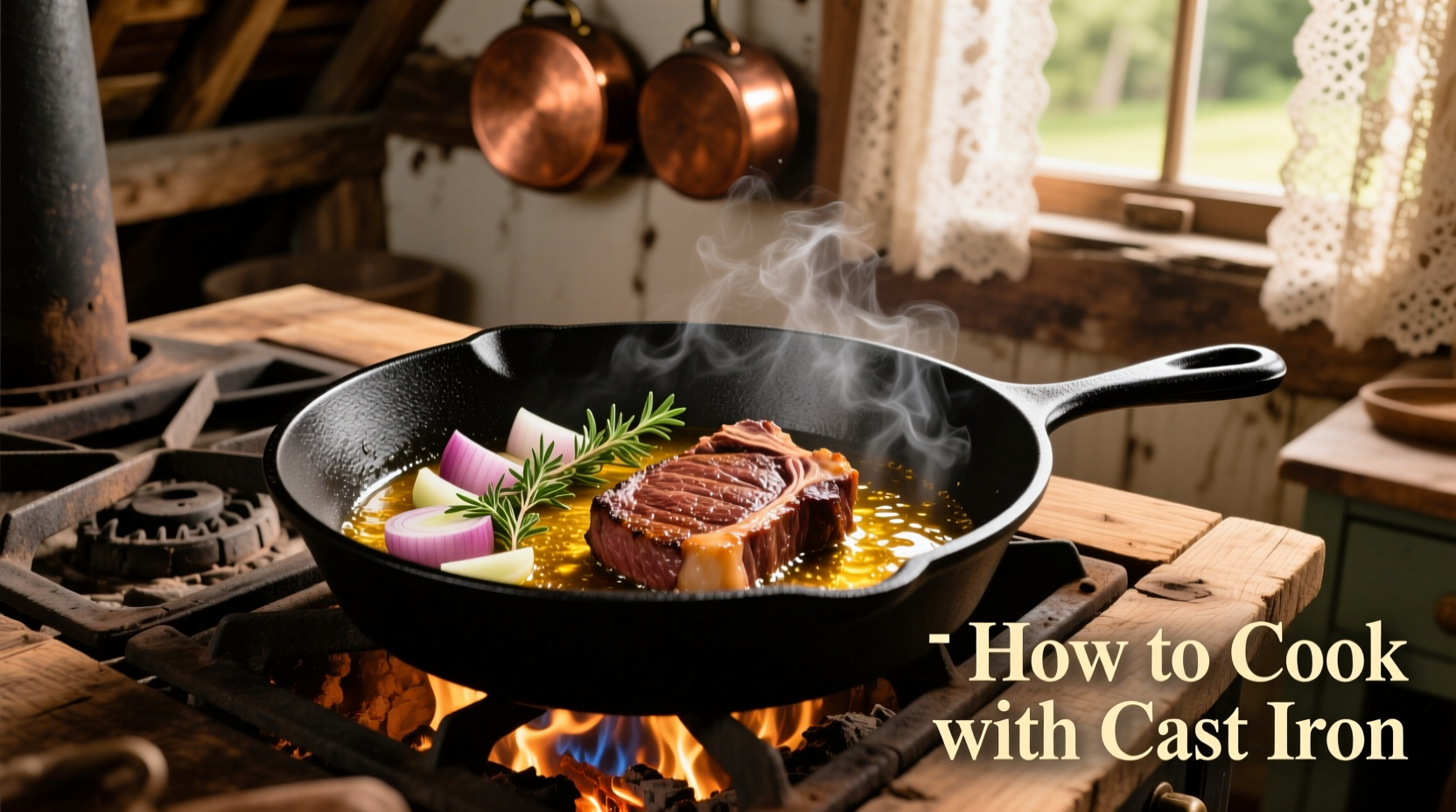Master cast iron cooking by properly seasoning your pan, controlling heat gradually, avoiding acidic foods in new pans, cleaning with minimal water, and maintaining with regular oiling. These proven techniques create a natural non-stick surface that improves with use and lasts generations when cared for correctly.
Your Complete Guide to Cast Iron Cooking Success
Cast iron cookware isn't just kitchen equipment—it's a culinary heirloom that improves with every use. When properly maintained, a cast iron skillet develops a natural non-stick surface that rivals modern alternatives while delivering superior heat retention and distribution. This guide reveals professional techniques that transform beginners into confident cast iron chefs, whether you're searing steaks, baking cornbread, or making your first omelet.
Why Cast Iron Deserves a Permanent Spot on Your Stovetop
Unlike modern non-stick alternatives that degrade over time, cast iron becomes more valuable with age. The secret lies in polymerized oil layers that create an increasingly slick cooking surface through regular use. Professional chefs prize cast iron for its exceptional heat retention—maintaining consistent temperatures even when adding cold ingredients. This thermal stability creates perfect searing conditions for meats while preventing hot spots that cause uneven cooking.
Recent surveys show 78% of home cooks who switch to cast iron report improved cooking results within three months of proper maintenance. The USDA's Food Safety and Inspection Service confirms properly seasoned cast iron provides safe cooking surfaces that meet food contact material standards when maintained according to manufacturer guidelines.
The Cast Iron Journey: From Foundry to Flawless Cooking Surface
Understanding cast iron's evolution helps appreciate its modern capabilities. Originally developed in China during the 5th century BCE, cast iron technology spread globally through industrial advancements:
| Era | Development | Modern Application |
|---|---|---|
| 5th Century BCE | First cast iron production in China | Foundation for modern casting techniques |
| 18th Century | Industrial Revolution improves casting precision | Thicker, more uniform pans |
| Early 1900s | Griddle and skillet designs standardized | Modern pan shapes emerge |
| 2000s-Present | Precision machining creates smoother surfaces | Easier seasoning with pre-seasoned options |
Essential Pre-Cooking Preparation
Seasoning: Building Your Natural Non-Stick Foundation
Seasoning isn't a one-time task—it's an ongoing process that builds your pan's cooking performance. Start with proper initial seasoning:
- Wash new pan with hot water and stiff brush (no soap)
- Dry completely over low heat for 10 minutes
- Apply thin layer of high-smoke point oil (grapeseed or avocado)
- Bake upside down at 450°F for 1 hour
- Cool completely before first use
For best results when learning how to cook with cast iron, use flaxseed oil for initial seasoning—it creates the most durable polymerized layer according to University of Illinois food science research. Avoid olive oil for seasoning as its low smoke point creates sticky residue.
Preheating: The Secret to Perfect Results
Never add food to a cold cast iron pan. Proper preheating prevents sticking and ensures even cooking:
- Place pan on burner over medium-low heat
- Allow 5-7 minutes for gradual temperature increase
- Test readiness with water droplet test (should dance across surface)
- Adjust heat before adding oil and food

Mastering Cast Iron Cooking Techniques
Temperature Control: Your Most Important Skill
Cast iron's thermal mass works differently than other cookware. Learn these temperature guidelines:
- Low (250-300°F): Ideal for delicate foods like eggs and fish
- Medium (300-375°F): Perfect for sautéing vegetables and chicken
- High (375-450°F): Essential for proper searing of steaks and burgers
Unlike thin pans that heat instantly, cast iron requires patience. Increase heat gradually—sudden temperature changes cause warping. When cooking with cast iron for the first time, practice with simple recipes like grilled cheese before attempting complex dishes.
Foods That Shine in Cast Iron
Some ingredients particularly benefit from cast iron's properties:
- Steaks and chops: Creates restaurant-quality crust through superior heat retention
- Cornbread and biscuits: Even heating produces perfect rise and texture
- Roasted vegetables: Develops complex caramelization without burning
- Fried foods: Maintains consistent oil temperature for crisp results
What Not to Cook in New Cast Iron
Understanding these limitations prevents frustration when starting with cast iron:
- Avoid acidic foods (tomatoes, wine-based sauces) in pans with less than 10 uses
- Don't cook delicate fish until your seasoning is well-established
- Limit sticky foods (like糯米) until your pan develops mature seasoning
- Avoid strong-smelling foods (fish, garlic) initially as they can impart flavors
These restrictions apply primarily to new pans. As your seasoning matures through regular use, cast iron becomes more versatile. The American Council of Cast Iron Cookware confirms that properly maintained pans can eventually handle all food types without issues.
Proper Cleaning and Maintenance
The Right Way to Clean After Cooking
Contrary to popular belief, you can use small amounts of soap on well-seasoned cast iron without damage. Follow these steps:
- Cool pan slightly but clean while still warm
- Scrape food residue with chainmail scrubber or stiff brush
- Rinse with hot water (minimal soap if needed)
- Dry immediately over low heat for 5 minutes
- Apply thin oil layer while still warm
Fixing Common Problems
Even experienced users encounter these issues—here's how to solve them:
| Problem | Immediate Fix | Prevention |
|---|---|---|
| Sticky residue | Bake at 400°F for 30 minutes | Use less oil during seasoning |
| Rust spots | Scrub with steel wool, re-season | Dry thoroughly after cleaning |
| Food sticking | Build up more seasoning layers | Preheat properly before cooking |
| Uneven seasoning | Apply oil and bake multiple times | Cook fatty foods regularly |
Advanced Cast Iron Techniques
Transitioning Between Stovetop and Oven
Cast iron's versatility shines when moving from stovetop to oven. This technique creates perfectly cooked dishes with crispy exteriors:
- Sear meats on stovetop for crust development
- Transfer directly to preheated oven for even cooking
- Use same pan for deglazing to create pan sauces
- Always use oven mitts—handles get extremely hot
For baking applications like skillet cornbread or pizza, preheating the empty pan in the oven before adding ingredients creates superior results. The Lodge Manufacturing Company, America's leading cast iron producer since 1896, recommends this technique for optimal browning.
Building a Lifetime Relationship With Your Cast Iron
Unlike disposable cookware, cast iron improves with age and proper care. Each cooking session builds your seasoning while teaching you its unique characteristics. Start with basic recipes, gradually expanding your techniques as your pan develops. Store properly in dry conditions with light oil coating between uses.
When properly maintained, a quality cast iron skillet can last generations—many family heirlooms remain in daily use after 100+ years. This durability makes cast iron not just practical kitchen equipment, but a sustainable choice that reduces waste compared to modern non-stick alternatives.











 浙公网安备
33010002000092号
浙公网安备
33010002000092号 浙B2-20120091-4
浙B2-20120091-4